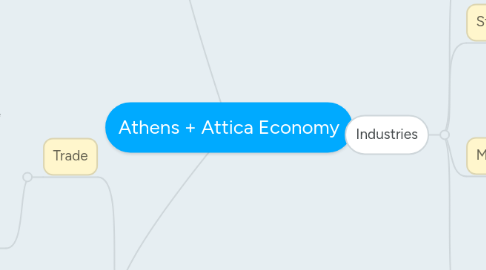
1. Impact of empire
1.1. Tribute
1.1.1. Since 454 BCE, Tribute from Athenian Alliance held in the Piraeus. Market in the center of Greece, holding an abundance of goods which were difficult to attain from other places. Tribute was recorded on stone tablets
1.2. Maintanence of the fleet
1.2.1. The Delian League was a naval fleet consisting of 150-330 member states, under the leadership of Athens. Their main objective was to fight the persians, a common enemy which influenced the many states to join this army. This was a positive impact of the empire as now Athens had a source of income which would have provided them with large amounts of resources to use at their disposal. After a while, Athens used the fleet for its own purposes which drove minor allies away from the league creating conflicts. The Spartans and the Delian League had a war lasting for more than 20 years which resulted in the famous warriors, Spartans winning. From this battle, Athens would have lost a lot of valuable resources having a negative Impact on the empire.
2. Economic Exchange
2.1. Trade
2.1.1. 5th Century became center of large trade empire. Wealth based upon trade. The triremes protected the vital trading routes through the Aegean Sea and out to the west + South of the Greek mainland. Safe trading conditions guaranteed work and wealth for the people back at Athens and surplus money for running the Athenian navy. Athens needed basic imports: Timber, Wheat, Iron, Oil, Copper, Drugs, Tapestries,Linen and Flax. They exported: Olive Oil, Wine, Crafted pots and Silver. Every item entering or leaving the Piraeus earned a tax of 2%. Most trade held by Metics, foreigners and slaves.
2.2. Tribute
2.2.1. Since 454 BCE, Tribute from Athenian Alliance held in the Piraeus. Market in the center of Greece, holding an abundance of goods which were difficult to attain from other places. Tribute was recorded on stone tablets.
2.3. Shipping
2.3.1. Major import and export trade of manufactured goods. For example wine & olives, grain from the black sea, timber from northern Greece and other goods.
2.4. Silver Mining
2.4.1. Vein of silver found (Laurion) in 483 BCE, Profits were used to build new Warships against the Persians. Mining rights given to the wealthy who used slaves.
2.5. Coinage
2.5.1. Introduced in mid 6th Century. Attic owl adopted as badge of city on the major unit of exchange, the silver tetradram. 5th Century restricted subject cities into using Athenian standard of coinage. Made trading easier and gained their profit from monopoly ( control of the supply of or trade)
3. Industries
3.1. Pottery
3.1.1. Potters depicted people at work; in a bronze foundry making statues, painting vases, pickling olives and weaving. It would store oil, wine and other food items. Job done by both men and women (not sure if paid work for women)
3.2. Store Masonary
3.2.1. The stone masonry industry of Athens helped in building the Acropolis itself. The stone was taken from the surrounding mountains and was used to create temple and monuments within the city. Slaves were used to collect the stone but skilled craftsmen were required to actually build the structures.
3.3. Metal Working
3.3.1. Due to the Athenians rich source of silver, there metal working industry included their ability to produce original currency from their silver mines. All the coins were hand made by the mint. Other products that were produced in the metal working industry were weapons such as swords, couches and shields. This job was mainly performed by slaves but blacksmiths did most of the jobs as slaves were unskilled in this industry. Evidence if metal working industry existing is the finding of swords, shields and coins.
3.4. Ship Building
3.4.1. Ensured a regular supply of work for poorer Athenians. As having dominance of the sea, they had a big ship industry. Being the leader of the Delian League, the flow of tribute helped Athens in producing the required ships that were needed. The money that the tribute brought helped pay for the timber needed to build the ships but once again slave labour helped in cutting the cost of building the ships.

